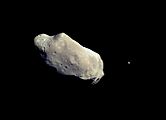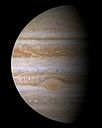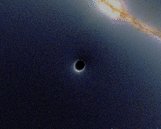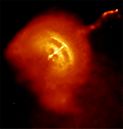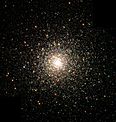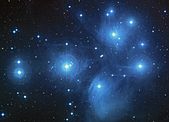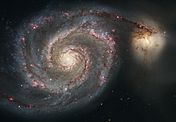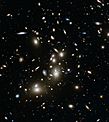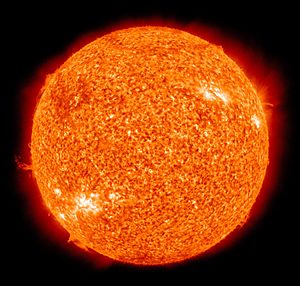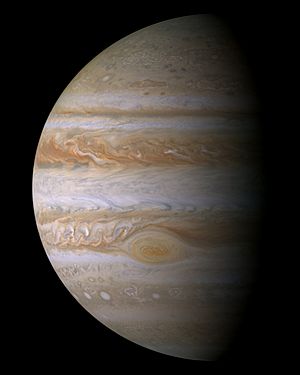Astronomical object facts for kids
|
|||||||
| Selection of astronomical bodies and objects |
An astronomical object is anything in space that astronomy studies. Think of it as anything found in the Observable universe! This means everything from tiny asteroids to giant galaxies. Things on Earth itself are usually not called astronomical objects.
Astronomical objects can be natural, like stars and planets. They can also be structures made of many smaller objects. For example, a star cluster is a group of stars. A galaxy cluster is a group of galaxies.
Contents
What Are Astronomical Objects?
Astronomical objects are the building blocks of our universe. They are what scientists who study astronomy look at. These objects are found far beyond Earth's atmosphere. They can be huge, like a galaxy, or very small, like a piece of comet dust.
Scientists use powerful telescopes to observe these objects. They learn about their size, how they move, and what they are made of. This helps us understand how the universe works.
Types of Space Objects
There are many different kinds of astronomical objects. They can be grouped by their size, what they are made of, or how they behave. Here are some of the main types:
Stars: Giant Balls of Light
A star is a huge ball of hot, glowing gas. It makes its own light and heat. Our Sun is a star, and it's the closest one to Earth. Stars come in many sizes and colors. Some are much bigger and brighter than our Sun.
Stars are born in clouds of gas and dust called nebulae. They live for millions or billions of years. When they die, they can turn into things like white dwarfs or black holes.
Planets and Moons
A planet is a large object that orbits a star. It must be big enough to have its own gravity pull it into a round shape. It also needs to have cleared its path around the star. Earth is a planet, and so are Jupiter and Mars.
A moon is an object that orbits a planet. Earth has one moon. Other planets, like Jupiter and Saturn, have many moons. Some moons are very small, while others are larger than some planets.
Smaller Space Travelers
- Asteroids: These are rocky objects that orbit the Sun. Most are found in the asteroid belt between Mars and Jupiter. They are much smaller than planets.
- Comets: These are icy bodies that orbit the Sun. When they get close to the Sun, the ice turns into gas. This creates a bright tail that we can sometimes see from Earth.
Huge Space Structures
- Star Clusters: These are groups of stars held together by gravity. There are two main types:
- Open clusters are loosely packed groups of young stars.
- Globular clusters are tightly packed, spherical groups of older stars.
- Nebulae: These are giant clouds of gas and dust in space. Some nebulae are where new stars are born. Others are the remains of dead stars.
- Galaxies: These are huge collections of stars, gas, dust, and dark matter. Our solar system is part of the Milky Way galaxy. Galaxies come in different shapes, like spirals and ellipses.
- Galaxy Clusters: These are the largest known structures in the universe. They are groups of many galaxies held together by gravity.
Images for kids
See also
 In Spanish: Objeto astronómico para niños
In Spanish: Objeto astronómico para niños


